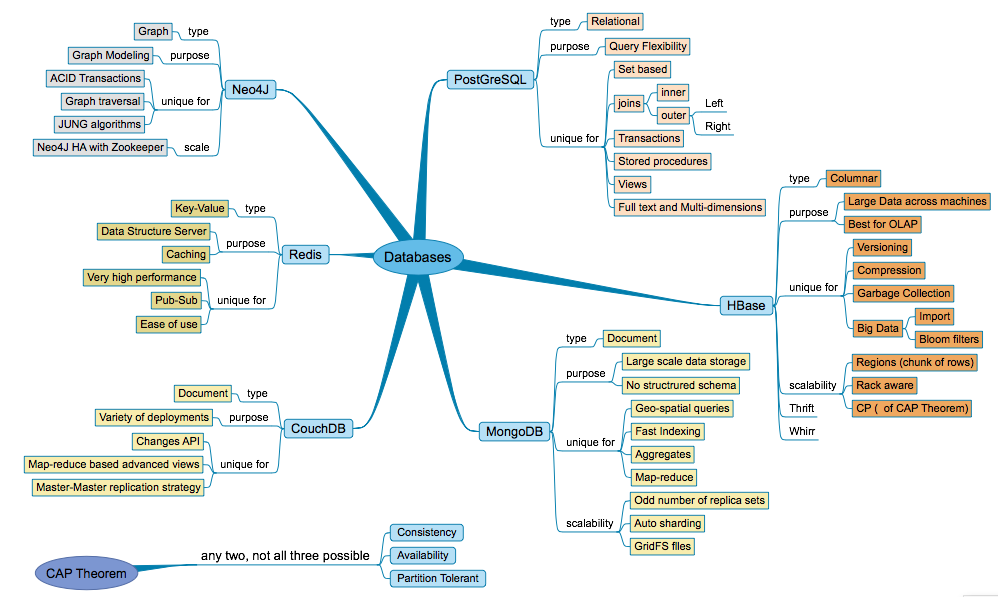We have come a long way from the days where database development meant designing relational models for a database like Oracle or SQL Server. The last few years have seen a proliferation of databases that are meant to perform very specific tasks.Application server middle-ware have also become more flexible and now support multiple data sources instead of having to use just a single DB.
Since there are so many options out there it is important to understand the strength and weakness of each and use databases appropriately, based on functional or non-functional requirements. Here’s a handy map of some of the most popular databases and where they would fit into your application architecture.

In addition to picking a database based on functional requirements, one may require to access them based on the compromises each one makes in terms of supporting consistency, availability and partitioning tolerance. A popular thumb-rule for such an assessment is known as the CAP Theorem. CAP theorem states that most databases would be able to satisfy two of the three conditions above, but not all - so every database makes a compromise in one of these parameters to satisfy the other two. If one of these parameters are important for an architecture, it may be pertinent to know if a database is making a compromise before making a choice.
Want to know more? Check out Seven Databases in Seven Weeks
